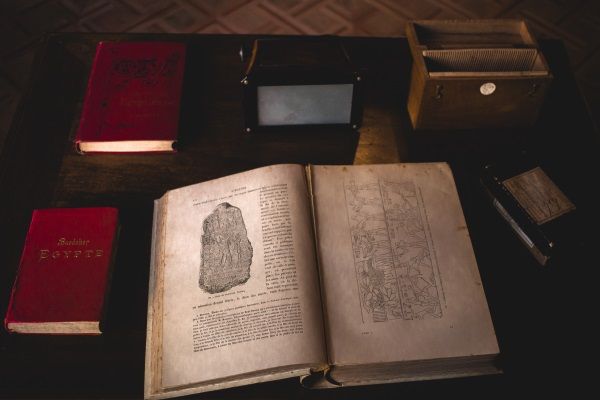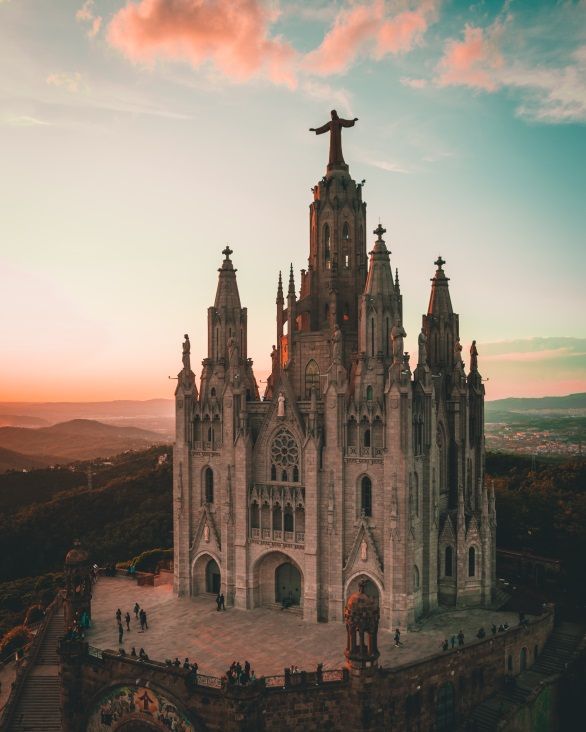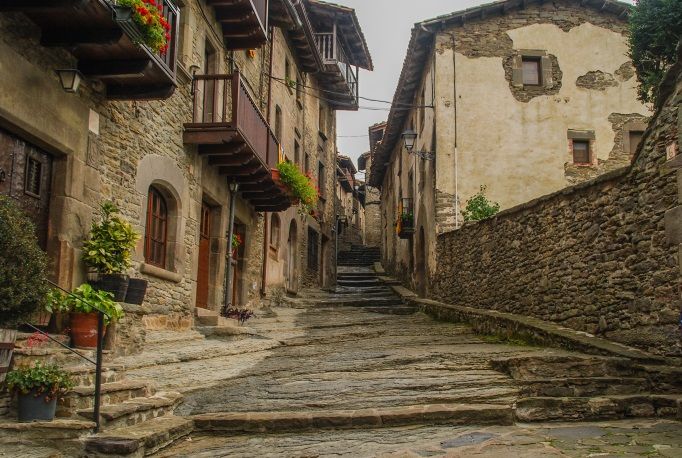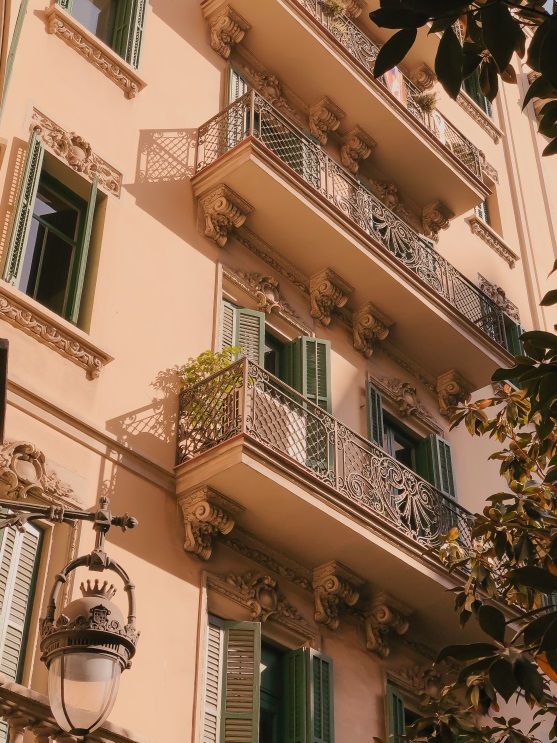Catalan culture: History, symbols, art, and traditions
Mentioning Spain is mentioning its culture—flamenco, toreadors, paella, tapas, and a plethora of other impactful elements that have transcended the borders of their country.
However, this Iberian country is not as homogenous as it may seem. Spain is a combination of unique cultures, each thriving with a firm grip on their idiosyncrasy.
One of such is, of course, Catalonia—the northeastern region of Spain, and a historical nationality with its own culture and appeal.
What is Catalonia?
Strictly speaking, current Catalonia is one of Spain’s autonomous communities, composed of four provinces—Lleida, Tarragona, Girona, and the ever-famous Barcelona. This status grants it a certain level of political autonomy, yet it remains part of the unitary state of Spain.
Located between the Pyrenean Mountains and the Mediterranean Sea, Catalonia enjoys a privileged position that allowed it to develop its own unique culture and language. Likewise, it has evolved into an economic powerhouse, with booming industries and a thriving population.
However, Catalan culture transcends the limits of modern-day Catalonia and finds its roots in the medieval Principality of Catalonia and its surrounding areas.
Subsequently, the autonomous region of Valencia, the Spanish Baleares Islands, the French department Pyrénées-Orientales—also known as Northern Catalonia—and the Principality of Andorra display and are affected by Catalan culture and language.
A culture that thrives despite oppression.
Understanding Catalonia’s culture means discussing its long history, as well as its fight for recognition and autonomy against repression meant to erase its distinctive identity.
Catalonia has always been a crossing road of multiple civilizations, each of them influencing the eventual development of what would be known as Catalonian culture. Romans, Visigoths, Muslims, and Franks all occupied the territory, each living a particular imprint.
The County of Barcelona was the first unified entity within the territory, and it eventually joined the kingdom of Aragon. Other counties united around the County of Barcelona, eventually forming the Principality of Catalonia—ruled under the crown of Aragon. When Castile and Aragon united through marriage, Catalonia became part of the start of modern Spain.
While the Principality of Catalonia was part of this new political unit, it remained proud of its customs and had its own strong identity, a determination that carries on up until the present.
As such, through the years Catalonia has continuously sought higher levels of autonomy, resulting in dichotomic eras of relative self-rule and crushing repression of its culture. Ironically, each wave of criminalization resulted in an even stronger sense of cultural identity,
Following the death of Francisco Franco in 1975, Catalonia established a Statute of Autonomy and reacquired its cultural sovereignty, though that hasn’t stopped certain areas of the population from claiming further independence.
Catalan Emblems and Symbols.
Some of the quintessential elements of a proud and established culture are, without a doubt, its symbols. When a society has faced restraint as often as Catalonia, these emblems become a powerful statement of autonomy and identity.
They display a sense of togetherness that blooms in the face of adversity.
The Senyera.
The flag of Catalonia—Senyera in Catalan—is, without a doubt, its most prominent emblem.
Its distinctive pattern of horizontal red and yellow stripes is in the flags of every political entity with a historical and cultural affinity to Catalonia—Aragon, Balearic Islands and Valencia in Spain, and Pyrénées-Orientales and Provence-Alpes-Côte d’Azur in France. Likewise, the Senyera is also visible in the coat of arms of Andorra.
Religious symbols.
The patron saints of Catalonia are The Virgin of Monserrat (Mare de Déu de Montserrat) and Saint George (Sant Jordi). They are the remnants of the area's extremely catholic past, but they are also far more than that.
While the current population does not display the same level of religious fervor it did before, both Saints have transcended and, alongside their catholic prominence, they have also become symbols of Catalan pride, and the stars of many celebrations.
The Catalan Donkey.
While Catalonia does not possess an official national bird or animal, in recent years the Catalan Donkey has been adopted as a symbol, often featuring it in souvenirs and merchandise.
Most of the time this display is meant to be a tongue-in-cheek mockery of the Spanish Toro de Osborne—derision to a symbol that some Catalans do not distinguish as their own.
Seny and Rauxa.
Unlike the previously discussed symbols, the eternal debate between seny and rauxa is an intangible emblem of Catalan culture—a philosophical interpretation of human nature that is akin to the yin and yang of Asian cultures and is, often enough, a way of life.
Seny is something akin to common sense, and it involves a way of life centered on harmony, careful consideration of circumstances, temperance, and rationality. On the other hand, rauxa represents impulsiveness and instinct—brashness that stands against the patience and measure of seny.
Arts & Architecture.
Due to its privileged geographical position, Catalonia has always been in the crossroad for multiple influences and tendencies across Europe and the Mediterranean, giving each of them its own particular flavor.
For example, the Renaixença was a traditionalist 19th-century revival of Catalonian culture and language, blooming after the oppressive centuries of the Decadència. By contrast, the succeeding Modernisme, parallel to the international Art Noveau, also embraced the Catalonian identity, but through a relentless quest for innovation.
Some of the most acclaimed Spanish artists were born in Catalonia, like Salvador Dalí or Joan Miró, while others or influenced by its culture, like Pablo Picasso. Regarding architecture, Antoni Gaudí’s works have shaped current Catalonia—its most impressive representative being the Sagrada Familia.
Gastronomy.
Catalonian cuisine developed and expanded through Spain, France, and Andorra. Due to the geographical positioning of historical Catalonia, its gastronomy is strictly Mediterranean—makes use of garlic, onion, tomatoes, olive oil, pork sausages, and saltwater fish.
A characteristic of Catalonian cuisine is its use of elaborate sauces and seasonings. For example, there is the sofregit—a base sauce that consists of finely chopped ingredients sautéed in olive oil, usually tomatoes and onions alongside aromatic herbs. Other examples include the allioli, romesco, and picada.
The traditional Catalan breakfast is the famed pa amb tomàquet—toasted bread covered in tomato, olive oil, and salt. Equally recognized are the calçots, a type of scallion usually grilled over a fire and dipped in romesco sauce.
Catalonia also has its take on the traditional paella, the fideua, and plenty of other iconic dishes.
Traditions and Celebrations.
Festivities in Catalonia are more than simple revelries—they also celebrate their culture and what it means to be Catalan.
Castells.
Few traditions are as natively Catalan as the castells—human towers that show up in every festivity. It’s a spectacle meant to entertain, in which teams compete to see who can build and disassemble the tower first.
Usually, men form the pinya or base structure, both men and woman build the tronc or levels of the castells, while a particularly agile child is the enxaneta or the point of the tower.
When the enxaneta reaches the top, the tradition is for the kid to lift four fingers in the air, as they represent the Senyera.
Correfocs.
As quintessential as castells, correfocs are a staple in most Catalan festivals. They are individuals disguised as devils, running around and throwing fireworks to the crowd.
These beings are not malicious—they are tricksters, mischievous entities that spread joy through their playful antics. The correfocs usually dance and jump around to the rhythm of the music, and the crowd always knows to wear appropriate clothing to avoid potential accidents.
Gegants or Gigantes.
Gegants or gigantes, giants in English, are comedic, hollow costumed figures that usually parade around during celebrations, with individuals hiding inside to grant movement.
Usually representing and parodying nobility, massive gigantes parades display multiple well-known figures, dancing and greeting to the rhythm of traditional music.
Sardanas.
The Catalan folk dance per excellence, sardanas are a circle dance popular in festivities, and people from all ages and backgrounds can join in as long as they know the basic set of steps.
Participants, called sardinistes, hold hands and face inwards, dancing until the end of the traditional song. Sardanas are an expression of joy and unity, exacerbating local culture and comradery amidst neighbors.
La Mercè.
Perhaps the biggest celebration in Barcelona, La Mercè is celebrated during a week near the end of September, and it’s in honor of Mare de Deu de la Mercè, patron saint of Barcelona.
Festivities are large and lively, featuring castells, correfocs, gigantes, sardanas, and many other Catalan traditions.
La Diada.
Each September 11th, Catalonia celebrates the Catalan National Day. It commemorates the defeat of Barcelona in the War of Spanish Succession, the revocation of Catalonia’s autonomy, and the start of the Decadència.
As such, the date has become a celebration of what it means to be Catalan—a display of heritage and national identity performed through sardanas and castells, commemorating the suppression of their culture through its glorification.
Because that is the authentic Catalan culture—thriving through strength and temperance.
Força i seny.






 English
English
 Català
Català